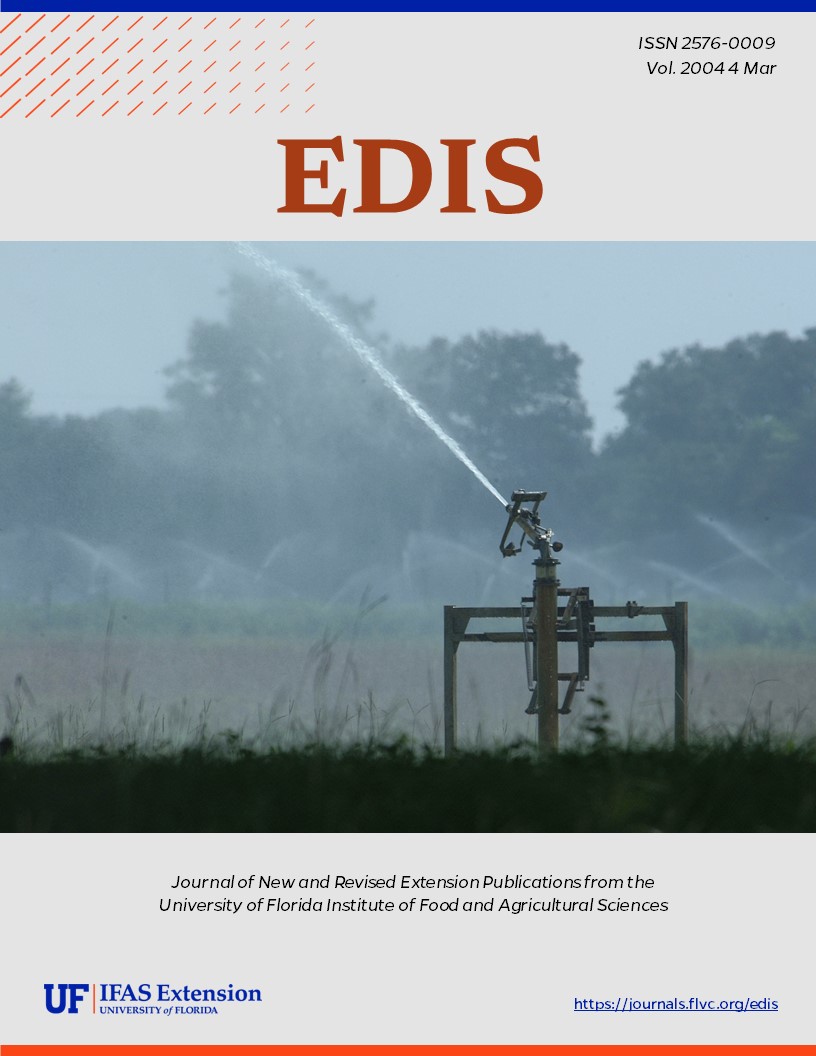Abstract
Diachasmimorpha (formerly Biosteres or Opius) longicaudata Ashmead (Wharton 1987) is a solitary braconid wasp parasitoid of Caribbean fruit fly, Anastrepha suspensa (Loew), larvae. This document is EENY-193 (originally published as DPI Entomology Circular 325), one of a series of Featured Creatures from the Entomology and Nematology Department, Florida Cooperative Extension Service, Institute of Food and Agricultural Sciences, University of Florida. Published: March 2001. Revised: November 2004.
References
Anonymous. FDACS, Division of Plant Industry. 1995. "Controlling the Caribbean fruit fly in Florida." 4 p.
Ashley, T.R., and D.L. Chambers. 1979. Effects of parasite density and host availability on progeny production by Biosteres (Opius) longicaudatus(Hym.: Braconidae), a parasite of Anastrepha suspensa (Dip.: Tephritidae). Entomophaga 24: 363-369. https://doi.org/10.1007/BF02374175
Ashley, T.R, P.D. Greany, and D.L. Chambers. 1976. Adult emergence in Biosteres (Opius) longicaudatus and Anastrepha suspensa in relation to the temperature and moisture concentration of the pupation medium. Florida Entomologist 59: 391-396. https://doi.org/10.2307/3494187
Baranowski, R.M. 1987. Wasps sting flies, 60-40. University of Florida, IFAS, Research '87. pp. 12-13.
Bess, H.A., R. Van Den Bosch, and F.H. Haramoto. 1961. Fruit fly parasites and their activities in Hawaii. Proc. Hawaiian Entomological Society 17: 367-378.
Greany, P.D., T.R. Ashley, R.M. Baranowski, and D.L. Chambers. 1976. Rearing and life history studies on Biosteres (Opius) longicaudatus (Hym: Braconidae). Entomophaga 21: 207- 215. https://doi.org/10.1007/BF02371907
Greany, P.D., J.H. Tumlinson, D.L. Chambers, and G.M. Boush. 1977. Chemically mediated host finding by Biosteres (Opius) longicaudatus. A parasitoid tephritid fruit fly larvae. Journal of Chemical Ecology 3: 189-195. https://doi.org/10.1007/BF00994145
Lawrence, P.O. 1981. Host vibrations cue to host location by the parasite, Biosteres longicaudatus. Oecologia 48: 249-251. https://doi.org/10.1007/BF00347971
Lawrence, P.O., R.M. Baranowski, and P.D. Greany. 1976. Effect of host age on development of Biosteres (Opius) longicaudatus, a parasitoid of the Caribbean fruit fly Anastrepha suspensa. Florida Entomologist 59: 33-39. https://doi.org/10.2307/3493166
Lawrence, P.O., P.D. Greany, J.L. Nation, and R.M. Baranowski. 1978. Oviposition behavior of Biosteres longicaudatus, a parasite of the Caribbean fruit fly, Anastrepha suspensa. Annals Entomological Society of America 71: 253-256. https://doi.org/10.1093/aesa/71.2.253
Wharton, R.A. 1987. Changes in nomenclature and classification of some opiine braconidae (Hymenoptera). Proceedings Entomological Society Washington 89: 61-73.
Wharton, R.A. and P.M. Marsh. 1978. New world Opiinae (Hymenoptera: Braconidae) parasitic on Tephritidae (Diptera). Journal of the Washington Academy of Science 68: 147-167.
Unless otherwise specified, articles published in the EDIS journal after January 1, 2024 are licensed under a Creative Commons Attribution-NonCommercial-NoDerivs 4.0 International (CC BY-NC-ND 4.0) license.

